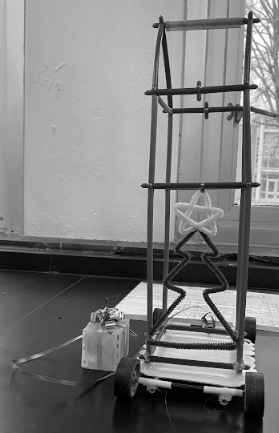Invisible illnesses made seeable;
Struggling in darkness
May 13, 2022
In the United States alone, more than 40 percent of school-aged children and adolescents have “at least one chronic health condition, such as asthma, other physical conditions, and behavior/learning problems,” says the Center for Disease Control and Prevention.
While a large population of students have a chronic health condition, the National Library of Medicine states that about one in 100 students can relate to sophomore Julianna Chaney in terms of orthostatic intolerance. As for the genetic condition she suffers from, only one in 5,000 people experience the same debilitating ordeals.
Chaney was diagnosed with Ehlers Danlos Syndrome (EDS), which she describes as “a connective tissue disorder,” Postural Orthostatic Tachycardia Syndrome (POTS), and “other comorbidities that come with EDS” when she was six years old.
These two chronic illnesses have forced a plethora of struggles upon her that influence her daily life. Due to her EDS, she deals with “chronic pain, fatigue, and [her] joints pop out of [socket], among other things.” Since this disorder affects all the connective tissue in the body, most of her systems have been disturbed.
POTS is an orthostatic intolerance condition in which standing for long periods of time causes reduction in blood volume, causing patients to feel lightheaded or faint prior to laying down, says Mayo Clinic. Chaney feels symptoms of being “overly dizzy,” which can cause her to pass out. She states that she can also experience fainting episodes when she experiences an injury or is in a lot of pain.
Writing has always been a difficulty for Chaney due to her EDS. With the issues of her connective tissues, her muscles must perform the work of her ligaments. According to Cleveland Clinic, ligaments allow the joint to move in the direction they’re supposed to, meaning that she must use her wrist muscles to perform a function they are not meant to do.
Daily tasks have been made much more challenging for her because of her chronic illnesses, such as simply walking. With the difficulty of typical tasks, the student has been forced to quit activities that she once enjoyed. Since her joints don’t sit properly in their sockets, she had to quit gymnastics. She says that after her diagnosis with EDS, she would find sports that she thought were fun but would then “quickly realize that those sports were not for [her].”
Being constantly mindful of her body, sensing when she was going to have a fainting episode and getting herself to a safe location, impacts her daily. She has been forced to grow in-tune with her body to learn the symptoms of when she could pass out, which has allowed her to ensure more damage is not done to her body.
These chronic illnesses are impossible to see. Without allowing insight on them, no one would know anyone with these diseases were affected by them. Chaney wishes that just because those suffering may look normal on the outside; they should not assume they are normal on the inside.












